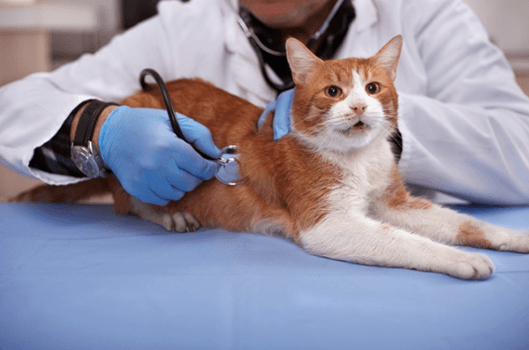
Cats can get herpes too! Feline herpesvirus type-1 causes cat viral rhinotracheitis. Like the herpes virus in other species, direct contact with viral cells is the cause. In cats, the virus causes upper respiratory issues and eye problems. There is no cure, but your vet may recommend ways to ease symptoms when your cat has an outbreak.
How Viral Rhinotracheitis Spreads
Like other forms of the herpes virus, viral rhinotracheitis spreads through direct contact. It could be contact with saliva or nasal discharge from an infected cat, or contact with an inanimate object like a cat toy or food bowl that an infected cat used.


How Long Can The Virus Live?
On inanimate objects, as long as the area is wet, the virus can live. This makes it especially dangerous in households with multiple cats who share the same water bowls, where the virus could live until you change the water and clean the bowl! Luckily on things like toys, as soon as saliva dries up, the virus dies. However, if you want to be extra careful, you can sanitize objects with decontaminants that kill viruses like bleach or wash them in the washing machine on high heat.
When is Viral Rhinotracheitis Contagious?
The virus is typically contagious any time it is active. The first outbreak typically lasts 10-20 days. After that, the virus will again become active during times of stress in the cat's life. This may include during pregnancy, after a move, the introduction of a new pet to the household or any other major life changes.
Can Viral Rhinotracheitis infect other animals or humans?

Luckily, viral rhinotracheitis is only a risk to cats. Just as human herpesvirus 1 & 2 cannot spread to other animals, neither can this one spread to you or your dog. However, some cases of what appears to be viral rhinotracheitis may, in fact, be a bacterial upper respiratory infection that is actually contagious to humans or other animals, so make sure to always wash your hands after handling infected cats or objects.
Symptoms of Cat Viral Rhinotracheitis
When a cat gets this life-long virus, the symptoms will not show up for 2-5 days. The first signs may be eating less and sleeping more. A great pet owner always pays attention to their cats' behaviors including lack of appetite, lethargy and different litter box habits.
Then, your cat may simply have signs of an upper-respiratory infection including sneezing and nasal congestion. However, they may also have watery or swollen eyes, discharge from the nose and eyes or even a fever. In the most extreme cases, viral rhinotracheitis can lead to eye scarring and ulcers on the cornea.
Treatment & Prognosis for Cats with Viral Rhinotracheitis


Most cats with this virus live close to their normal lifespan. Though, in cat breeds with a flat face like Persians, respiratory symptoms can be more serious. Like the herpes virus in humans, it is usually more of an annoyance than anything. There is no cure, but vets may treat symptoms of the virus with things like eye drops, humidifiers and antibiotics to prevent secondary infections from developing.
The prognosis, in general, is quite good. As long as you keep your cat healthy with a balanced diet and perhaps immune boosting supplements, you can stop your kitty from getting outbreaks and help them live a happier life.
If your cat gets viral rhinotracheitis, don't worry, it's not that serious in most cases. It's just something to monitor and care for. Cats are resilient creatures and with loving care, they will be back to being their playful selves in no time after an outbreak of this highly contagious virus.


Follow Us